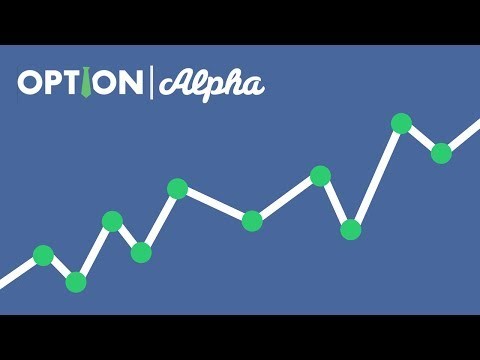Q adjusting iron condors is profitable Options for Rookies
Post on: 7 Апрель, 2015 No Comment

Mark,
I appreciate your professional opinion as I recognize your expert advice in the field of IRON CONDOR trading.
Dan Sheridan and xxx xxx both say that adjustments are the key to making profits every
month on IRON CONDORS. I hate to just close out a CONDOR, if they are correct and
adjustments and roll ups and downs really do work in trending markets. 
I would like your opinion please.
Thanks in advance!
Joules
***
I must tell you that I have great respect for Dan Sheridan.  He knows what he is doing.  I deleted the other name because I dont know of him and he sells videos and makes big promises.  I cannot support that.
My basic philosophy when trading options:  The strategy you choose is important, but long-term success depends on your ability to manage risk.
Regarding iron condors, I believe that risk management the ability to adjust existing positions coupled with knowing when to close trades that have gone awry makes all the difference in whether you succeed as an iron condor trader.
I dont want to go so far as to make this bold statement: Make adjustments because they will be profitable.
But, I do believe: After you adjust a position, your risk/reward profile is improved and that suggests you will make money going forward sometimes based on whats left of the original iron condor, and sometimes based on the trade made as an adjustment. 
When making that adjustment, you are making a trade based on your best judgment at the time the trade must be made.  That new addition to the old position will not always earn a profit.  But, over the longer term, you will own less risky positions after the adjustment, and you will own good positions after the adjustment.
Why are they good positions?  Its a bad idea to take an iron condor (or one half of it) that is too risky to hold and make a trade that gives you a new, somewhat less risky, but still poor position.  If you cannot transform the position into one that you want to own, then you are better off closing the position, taking the loss, and moving forward with a new position that you do want to own. 
Holding bad positions and hoping for a good outcome is not a winning strategy.
The bottom line is that when you make a trade to adjust the position, its going to improve what you currently own.  Thats why it tends to be a money maker going forward.  No guarantee.  But you had no guarantee when you initiated the iron condor in the first place.
Regarding trending markets: Adjustments control risk and iron condors do not do well when the market moves too far in one direction.  So I guess the results are going to depend on just how far the market trends and just how quickly you make adjustments to iron condors.  Some traders wait for a long time perhaps until the short strike moves into the money.  Others move more quickly, based on the delta of the short option.  No one is right.  Its truly a question of where your comfort zone lies and how you want to move positions back into that zone. Take a look at the idea of adjusting iron condors in stages.
After all that, its time to return to your question.
FOTM vs OTM call and put spreads
When trading options there is almost never a best or better situation.  Each alternative has merits and a great part of knowing which is better for you depends on understanding the boundaries of your personal comfort zone.

However, this is one of those situations in which I have a strong preference and Ill share that with you.
a) FOTM, low premium spreads.  I dislike these very much. When you sell a spread and collect a small premium, it makes it very difficult to consider closing the trade early.  I trade my 90-day, 10-point, iron condors on RUT, an index priced near $600, for approximately a $3 credit.  Then I close the winning side when it is possible to pay 20 to 25 cents.  I then close the other side when appropriate either to reduce risk or lock in the profit.  Covering early has a residual benefit that many miss: Being out of the market with the profit already locked in makes it impossible to lose money until you open your new trade.  It seems trite, but this is a wonderful method for reducing risk less time exposed to an unlucky event.
When you sell a call spread for 10 cents and a put spread for 10 cents, that doesnt leave much room to repurchase.  Especially when commissions must be paid.
The other reason I dislike these positions is illustrated by your idea to load up on them.  If you disagree with everything else I say in this post, please, please accept this to be true:  You do NOT want to load up just because the premium is small.  Increasing size to generate more income is a deadly strategy.  Im not telling you there is a chance you will regret doing that one day, Im telling you that you WILL regret it.
If you choose to play with these very low-priced iron condors, please accept the reduced profits and do not sell too many in an attempt to generate more profits.  Sure you can sell 20% more than your normal quota, but doubling- or tripling-up is a common, but ill-advised strategy.  I know that after a few months of seeing the options expire worthless, you will be tempted.  Be careful.
When you write about 75-cent iron condors, you neglected to mention how far apart the strikes are, the price of the underlying and the volatility.  All of these are important.  If you are trading 10-point spreads in GOOG for 75 cents, I dont like it.  If you are trading 2.5 point spreads in a $15 dollar, non-financial stock, thats much better.
Choosing the premium is an art.  Heres what I do.  I know the pr
emium I want to collect.  Then I go as far OTM as I can to enable me to collect that premium.  When IV is high, I sell options that are farther OTM.  When implied volatility is less, I must choose options that are less far OTM.  If that 75 cent level suits you, Id suggest doing those, rather than the 20 cent iron condor.
As far as adjusting at the break-even points, that makes no sense to me.  I hope Dan didnt suggest that.  First, when talking about options, the break-even point is measured on the assumption that the options are held all the way through expiration.  To me, that makes no sense.  Next, Im not holding that long.  Third, why should the premium you collected (that determines the b-e point) play any role in deciding when to adjust?
My belief and its very strong is that the premium collected when opening the trade is 100% unimportant when it comes to managing risk.  You should manage risk to prevent large losses and minimize all losses not to try to eke out a profit from a bad position.  Profits are needed but once you own the position, risk management determines your long-term fate as an option trader.  Adjust when uncomfortable.  Better yet, adjust in stages and make your first adjustment before you reach that discomfort level.  In my opinion, you should never calculate the break-even prices or think about them in any way.
Remember:  October promotion.  Buy my book @ 30% off and you will be entered into a drawing for one of three prizes.
NOTE: Some readers bought the book and did not send the e-mail that enters you into the draw for prizes.  If there is a problem, please comment to let me know.














